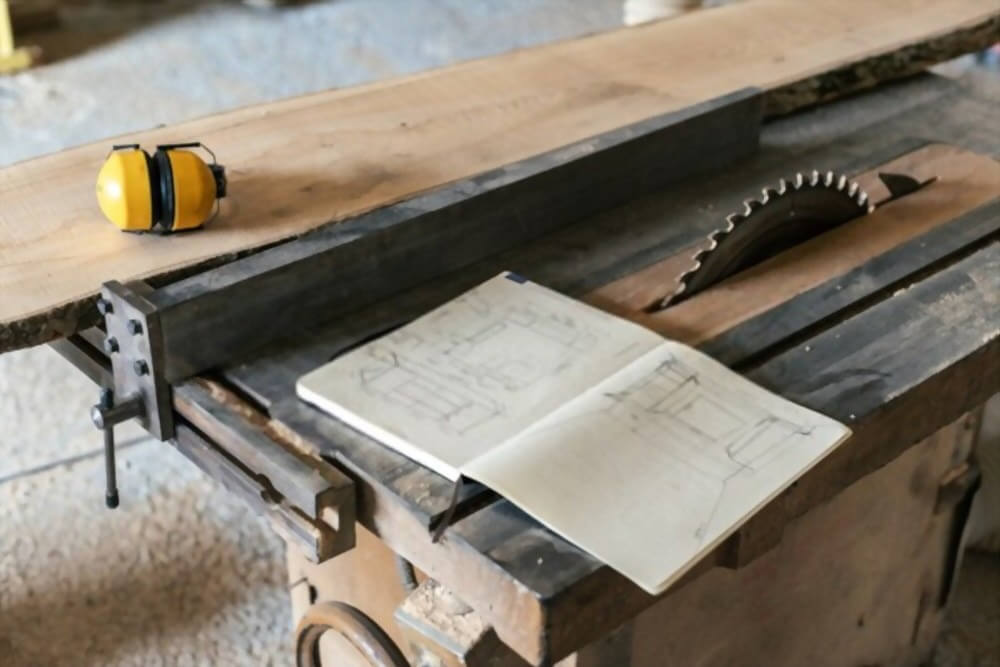Are you a woodworking enthusiast with limited space for your projects? If so, learning how to build a small woodworking bench is the perfect solution for your needs. A small woodworking bench offers a compact and versatile workspace for conducting various woodworking tasks without taking up too much room. In this article, you will discover the essential steps and considerations for creating your own small woodworking bench that meets your unique needs and space constraints.
When it comes to getting started on building a small woodworking bench, one of the first things to consider is selecting the right materials. The durability, stability, and cost of different materials will play a crucial role in determining the overall quality and functionality of your bench. Additionally, understanding the design considerations and accurate measurements for your small woodworking bench will ensure that it fits seamlessly into your workspace while providing adequate support for your projects.
In the following sections, you will be guided through a step-by-step construction process for building your small woodworking bench, as well as provided with valuable tips and tricks to streamline the assembly process. Furthermore, you will learn about adding finishing touches and avoiding common mistakes when constructing your bench. Finally, we’ll explore creative ways to customize and personalize your small woodworking bench to reflect your individual style while enjoying the numerous benefits it offers.
Selecting the Right Materials for Your Woodworking Bench
When it comes to building a small woodworking bench, selecting the right materials is crucial for ensuring the durability and functionality of your project. The type of wood you choose will greatly impact the overall quality of your bench. Hardwoods such as oak, maple, or cherry are popular choices due to their strength and resistance to wear and tear. However, softwoods like pine or cedar can also be suitable options, especially if cost and weight are important factors for you.
In addition to the type of wood, you’ll also need to consider the thickness and quality of the lumber. Thicker boards will provide more stability, while high-quality lumber will have fewer knots and defects that can weaken your bench over time. It’s important to carefully inspect each piece of wood before purchasing it to ensure it meets your standards for a long-lasting woodworking bench.
Another important material to consider is hardware such as screws, bolts, and hinges. Opting for stainless steel or galvanized hardware will help prevent rust and corrosion, which can compromise the structural integrity of your small woodworking bench over time.
To further enhance the durability and appearance of your woodworking bench, you may also want to consider adding a protective finish such as varnish or polyurethane. This will not only provide a layer of protection against scratches and moisture but also add an attractive sheen to your finished project.
By carefully selecting high-quality materials for your small woodworking bench, you can ensure that it will withstand years of use and provide a sturdy foundation for all your future woodworking projects. With attention to detail in material selection, you’ll be well on your way to creating a functional and reliable workspace for all your crafting needs.
Design Considerations and Measurements for a Small Woodworking Bench
When building a small woodworking bench, it’s important to take into consideration the design and measurements before you start construction. The first thing to consider is the size of the bench. Think about the space where you’ll be working and how much room you have for the bench. You’ll also want to consider the height of the bench, making sure it’s at a comfortable level for your woodworking projects.
Next, think about the materials you’ll be using for your small woodworking bench. Solid wood is a popular choice for its durability and sturdiness. Some common woods used for benches are oak, maple, and cherry. It’s important to select high-quality wood that will withstand the wear and tear of woodworking projects.
Once you have your design and materials in mind, it’s time to take measurements. Consider the dimensions of your workspace and how much room you have available for your bench. Keep in mind any specific tools or equipment that you’ll need to store within or beneath the bench. Taking accurate measurements will ensure that your small woodworking bench fits perfectly in your workshop or garage.
| Consideration | Details |
|---|---|
| Size of Bench | Consider available space and work area |
| Materials | Choose durable woods like oak, maple, or cherry |
| Measurements | Take accurate measurements considering workspace dimensions and necessary storage space |
Step-by-Step Construction Process for Building a Small Woodworking Bench
Building a small woodworking bench requires careful planning and precise execution. Following a step-by-step construction process can help you achieve the perfect workbench for your woodworking projects. Here’s how to build a small woodworking bench:
- Start by cutting all the necessary pieces according to the measurements and design considerations you have determined. This includes the legs, top, aprons, and any additional support pieces.
- Once you have all the pieces cut to size, it’s time to assemble the base of the bench. This typically involves attaching the aprons to the legs using strong joinery techniques such as mortise and tenon joints or dowels for added stability.
- Next, construct the top of the bench by attaching several planks of wood together, making sure they are level and securely fastened. You can use wood glue and screws to hold the planks in place, creating a flat and sturdy work surface.
- After assembling the base and top, join them together using heavy-duty hardware such as bolts or lag screws, ensuring that the bench is level and stable.
Following these steps will guide you through building a small woodworking bench that is not only functional but also durable enough to withstand various woodworking tasks.
Additionally when considering how to build a small woodworking bench, don’t forget about incorporating storage solutions underneath or adding clamps on the sides for securing your workpieces during projects for added convenience. With patience and attention to detail, you’ll soon have a custom-made small woodworking bench ready for all your future projects.
Tips and Tricks for Assembling Your Small Woodworking Bench
Assembling a small woodworking bench requires attention to detail and careful execution to ensure that all the components come together seamlessly. Here are some tips and tricks to help you with this crucial stage of the construction process:
Tips for Assembling Your Small Woodworking Bench:
- Organize all your materials and tools before starting the assembly process. This will save you time and prevent any unnecessary delays.
- Follow the assembly instructions carefully, paying close attention to the order of operations. Skipping or rushing through any step can lead to errors or misalignments.
- Use clamps to hold parts together firmly while you secure them with screws or glue. This will help prevent any shifting or misalignment during assembly.
Tricks for Assembling Your Small Woodworking Bench:
- Check for squareness and alignment at each stage of assembly. Making adjustments as you go along will ensure that your bench is sturdy and level.
- Pre-drill holes before inserting screws to avoid splitting the wood and to make the assembly process smoother.
- Work on a level surface to ensure that your bench comes together straight and true.
By following these tips and tricks, you can streamline the assembly process and increase the likelihood of a successful outcome when building your small woodworking bench.
Remember, assembling a woodworking bench is a critical step in the construction process, so take your time and pay attention to details. With patience and precision, you’ll soon have a sturdy, reliable bench that will serve as a valuable tool in your woodworking endeavors.
Adding Finishing Touches to Your Small Woodworking Bench
Once you have completed the construction of your small woodworking bench, the next step is to add finishing touches to ensure that it looks and functions exactly as you want it to. This final stage can make a significant difference in both the appearance and usability of your bench.
Here are some key steps to consider when adding finishing touches to your small woodworking bench:
1. Sanding: Before applying any finish, it is important to sand the entire surface of your bench to ensure a smooth and even finish. Start with a coarse-grit sandpaper and gradually work your way up to a finer grit for a polished look.
2. Staining or Painting: Depending on your personal preference, you can choose to stain or paint your woodworking bench. Staining allows the natural beauty of the wood grain to show through, while painting provides an opportunity for color customization. Be sure to apply multiple coats for durability.
3. Sealing: To protect your small woodworking bench from moisture, spills, and general wear and tear, it is crucial to seal the surface with a clear topcoat. A polyurethane or lacquer finish will provide a protective layer while enhancing the aesthetics of the wood.
By following these steps, you can ensure that your small woodworking bench not only functions well but also looks great in your workshop or workspace. Remember that adding finishing touches is an opportunity for personalization – consider adding hooks, tool holders, or other custom features that suit your specific needs.
Common Mistakes to Avoid When Building a Small Woodworking Bench
Choosing the Wrong Materials
One of the most common mistakes in building a small woodworking bench is using the wrong materials. It’s important to select high-quality wood that can withstand the wear and tear of woodworking. Avoid using softwoods that may dent or warp easily. Opt for hardwoods like oak, maple, or beech for durability and sturdiness.
Ignoring Design Considerations
Another mistake to avoid is ignoring proper design considerations when building your small woodworking bench. It’s crucial to take accurate measurements and plan out the dimensions of your bench before starting construction. Ignoring these design considerations can result in a bench that is too short, too narrow, or not sturdy enough to support your woodworking projects.
Rushing Through the Construction Process
Rushing through the construction process is another common mistake that can lead to errors and an unstable final product. Take your time with each step of the construction process, from cutting and assembling the pieces to securing them together. Patience and attention to detail are key in building a small woodworking bench that will serve you well for years to come.
By avoiding these common mistakes when building a small woodworking bench, you can ensure that your finished product is sturdy, durable, and functional for all your woodworking needs. Taking into account material selection, design considerations, and patience during construction will result in a high-quality bench that you can be proud of.
Creative Ways to Customize and Personalize Your Small Woodworking Bench
When it comes to customizing and personalizing your small woodworking bench, there are countless options to make it truly unique to you and your needs. Whether you want to add some functional features or simply give it an aesthetic upgrade, here are a few creative ways to make your small woodworking bench stand out.
Customized Storage Solutions
One way to personalize your small woodworking bench is by adding customized storage solutions. This can include adding drawers, shelves, or even a built-in tool rack to keep all your essential tools within arm’s reach. Consider the layout of your workspace and the tools you use most frequently to determine the best storage options for your bench.
Personalized Work Surface
Another way to customize your small woodworking bench is by personalizing the work surface. You can add a custom inlay or pattern using different types of wood to create a unique design. Additionally, consider adding a vise or clamping system that suits your specific needs and working style.
Adjustable Height and Mobility
For added functionality, consider making your small woodworking bench adjustable in height or adding wheels for mobility. This allows you to adapt the bench to different projects and working conditions, making it more versatile and convenient for your woodworking needs.
By incorporating these creative customization ideas into your small woodworking bench, you can make it not only functional but also a reflection of your personality and craftsmanship. With these personalized touches, your bench will become an essential part of your workshop that caters perfectly to how you work and what you need.
Conclusion
In conclusion, building a small woodworking bench can be a rewarding and fulfilling experience for any woodworker. By following the right design, materials, and construction process, you can create a sturdy and functional bench that will serve you well in your woodworking projects. The benefits of having a small woodworking bench include having a dedicated space for your projects, better organization in your workshop, and the ability to work more comfortably and efficiently.
When considering how to build a small woodworking bench, it’s important to remember that selecting the right materials is crucial for its durability and stability. Additionally, taking proper measurements and paying attention to design considerations will ensure that your bench fits your needs perfectly. The step-by-step construction process outlined in this article provides a clear guide for creating your own small woodworking bench, while the tips and tricks shared can help make the assembly process smoother.
Furthermore, adding finishing touches and customizing your small woodworking bench can make it even more functional and visually appealing. While there may be common mistakes to avoid during the construction process, it’s important not to get discouraged if you encounter challenges along the way.
With patience and perseverance, you can enjoy the satisfaction of using a small woodworking bench that you built with your own hands. By customizing and personalizing it to fit your needs, you will have a reliable tool that enhances your woodworking experience.
Frequently Asked Questions
What Is the Best Type of 2×4 for a Workbench?
The best type of 2×4 for a workbench is usually softwood like spruce, pine, or fir. These woods are affordable, easy to work with, and strong enough to support most DIY projects.
What Is the Best Wood for a Woodworking Bench?
The best wood for a woodworking bench is typically hardwood like oak, maple, or beech. Hardwoods are durable and can withstand heavy use and the wear and tear of woodworking tools.
What Is the Minimum Size for a Workbench?
The minimum size for a workbench depends on the space available and the intended use. Generally, a good starting point is a workbench that is at least 3 feet deep by 6 feet wide, providing enough space for various projects and tasks.

Hi everyone! I’m a woodworker and blogger, and this is my woodworking blog. In my blog, I share tips and tricks for woodworkers of all skill levels, as well as project ideas that you can try yourself.





